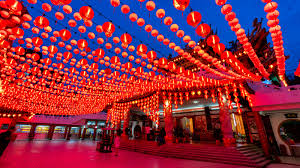Background of Noodles in China

Chinese noodles originated in the Han dynasty, which has more than 4,000 years of history. There are many stories about the origin of noodles. To a certain extent, noodles also reflect the cultural traditions and customs of China, which essentially means “human nature” and “worldly common sense”. There are thousands of varieties of noodles in China, according to the classification of the shape of noodles, seasoning gravy, cooking craft, and so on. Many noodles have local characteristics. Noodles are accepted by people from all over the world. The industrial revolution and the development of the food industry realized the transition from a traditional handicraft industry to mass production using machinery. In addition, the invention of instant noodles and their mass production also greatly changed the noodle industry. In essence, noodles are a kind of cereal food, which is the main body of the traditional Chinese diet. It is the main source of energy for Chinese people and the most economical energy food. Adhering to the principle of “making cereal food the main food”, is to maintain our Chinese good diet tradition, which can avoid the disadvantages of a high energy, high fat, and low carbohydrate diet and promote health. The importance of the status of noodles in the dietary structure of residents in our country and the health impact should not be ignored.

Chinese noodles originated in the Han dynasty (汉代). At that time, they were collectively referred to as cake (饼). When noodles were cooked in soup, it was called soup cake (汤饼). There were various kinds of shapes for noodles, such as sheets and strips. Sheets of noodles are cooked by pulling the dough into sheets and cooking in a pot with boiling water. In the Wei (魏), Jin (晋), and Northern and Southern Dynasties (南北朝), the shapes of the noodles gradually increased. Two special kinds of noodles, called shui yin (水引) and bo tuo (馎饦), were included in the book Qi Min Yao Shu (齐民要术) in the middle ancient era Shui yin is cooked by pulling the dough into strips as thick as chopsticks, cutting these into segments 30 cm long, soaking in a dish of water, then pressing them into flat noodles shaped as a leek leaf and cooking in a pot with boiling water. Bo tuo is especially smooth and delicious. In the Sui, Tang, and Five dynasty periods, there were more varieties of noodles. With the increase of noodle varieties, the methods and techniques of cooking have been continuously improved.
Food is not only a source of human nutrition, it also plays many roles in the aspects of religion and economy, etc. People use special food to celebrate important events and festivals, for instance, we eat sweet dumplings (元宵) in the Lantern Festival (元宵节), we eat traditional Chinese rice-puddings (粽子) in the Dragon Boat Festival (端午节), we eat moon cakes (月饼) in the Mid-Autumn Festival (中秋节), and we eat dumplings (饺子) in Spring Festival (春节).
In the aspect of noodles, Chinese people have lots of customs, which essentially mean “human nature” and “worldly common sense” materialized in the noodles. At birthdays, people eat longevity noodles (长寿面); at the time of marriage and moving into a new house people eat noodles with gravy (打卤面), which means flavored life; on the day of lunar February 2 “dragon head (龙抬头)”, people eat dragon whiskers noodles (龙须面) to look forward to good weather. We eat different noodles in different seasons and different festivals.




